Once again, DJI has launched a groundbreaking innovative product, the DJI Ronin 4D.
DJI is known for its innovation and the quality of its products. While there are many drone, gimbal, and camera competitors, few other companies come close when it comes to ease of use, reliability, and design of their products.
The DJI Ronin 4D, first and foremost, is a remarkable looking machine; if it were an animal, then you’d think that maybe it was a creation of Doctor Moreau, with its slight swan-like design. However, there’s nothing hideous about its form, just something unique, with lots of parts that you’ll recognise but, at first, make no sense at all.
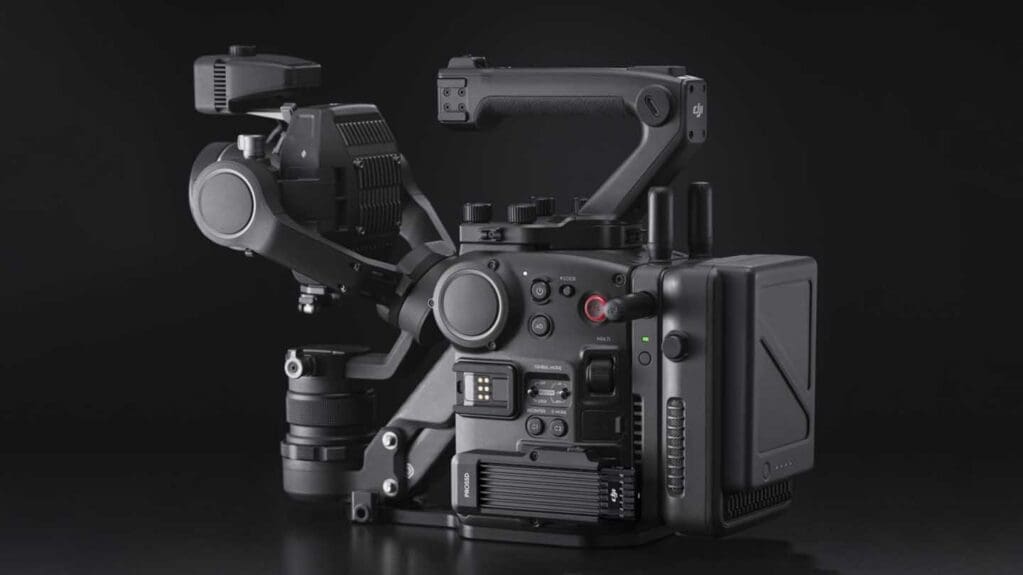
Looking over the DJI Ronin 4D and you can see the lens, what’s possibly the camera, and a gimbal but in a style and design thats hard to make sense.
The DJI Ronin 4D is all of those things; it is the world’s first 4D axis stabilisation camera system, which is very exciting.
This put’s all the filmmaking equipment you could need in one relatively small and lightweight box. I say small and light; you can check that out in the specs.
The DJI Ronin 4D is a full cinematography system that, due to its features, could influence the next generation of box set dramas and programs due to the shots and shooting styles that it will enable.
The DJI Ronin 4D features an all-new full-frame Zenmuse X9 gimbal camera with 4-axis stabilisation, a LiDAR Focusing system and built-in video transmission and control unit.
“DJI empowers creators with accessible and intuitive devices to capture and share the world exactly how they see it,” said Paul Pan, DJI Senior Product Line Manager.
“With DJI Ronin 4D, we use the power of technology to make cinema-standard production more affordable, cinema cameras more flexible, and cinematic imaging available to a boundless array of filmmakers. DJI Ronin 4D draws on our expertise in both aerial and ground-based cinematic innovations to enable the next generation of professional content creators to amaze and inspire us.”
Specification
- Overall Dimensions : 309 x 290 x 277mm
- Overall Weight: 4.67kg
- Operating time: 150 minutes
- intelligent features: ActiveTrack Pro, Autofocus
- Sensor Size: Full-Frame
- Base Lens Mount: DX
- Supported Lens Mounts: DL, M, E
- Dynamic Range: 14+ Stops
- Gamma: D-Log, Rec. 709, HLG
- EI: X9-8K: EI 200-12800, Dual Native ISO 800/4000 X9-6K: EI 200-12800, Dual Native ISO 800/5000
- Shutter Speed: Electronic Rolling Shutter 1/24s-1/8000s
- ND : Physical 9-Stop
- Focus Control : AF, M, AMF
- Recording Format: Apple ProRes RAW HQ/Apple ProRes RAW Apple ProRes 422 HQ/Apple ProRes 422* H.264 (4:2:0 10-bit)
- Storage Media: DJI PROSSD 1TB, CFexpress 2.0 Type B, USB-C SSD
- CFexpress 2.0 Type B Recording Format : ProRes 422 HQ: 6K: 23.976/24/25/29.97/30fps C4K: 23.976/24/25/29.97/30/48/50/59.94/60/72/96/100/120fps 2K: 23.976/24/25/29.97/30/48/50/59.94/60/72/96/100/120fps H.264: C4K: 23.976/24/25/29.97/30/48/50/59.94/60/72/96/100/120fps 2K: 23.976/24/25/29.97/30/48/50/59.94/60/72/96/100/120fps
- USB-C SSD Recording Format: ProRes 422 HQ: C4K: 23.976/24/25/29.97/30/48/50/59.94/60fps 2K: 23.976/24/25/29.97/30/48/50/59.94/60fps H.264: C4K: 23.976/24/25/29.97/30/48/50/59.94/60fps 2K: 23.976/24/25/29.97/30/48/50/59.94/60fps
New cinematic possibilities
At the heart of the new DJI, Ronin 4D is a chipset that has been designed and created in-house. CineCore 3.0 delivers an internal 8K RAW codec with precise colour reproduction, assistive features, an AI engine and a multi-link monitoring and control system with low-latency image processing.
The new camera system will be available in two options, either a 6K or 8K depending on the production and budget.
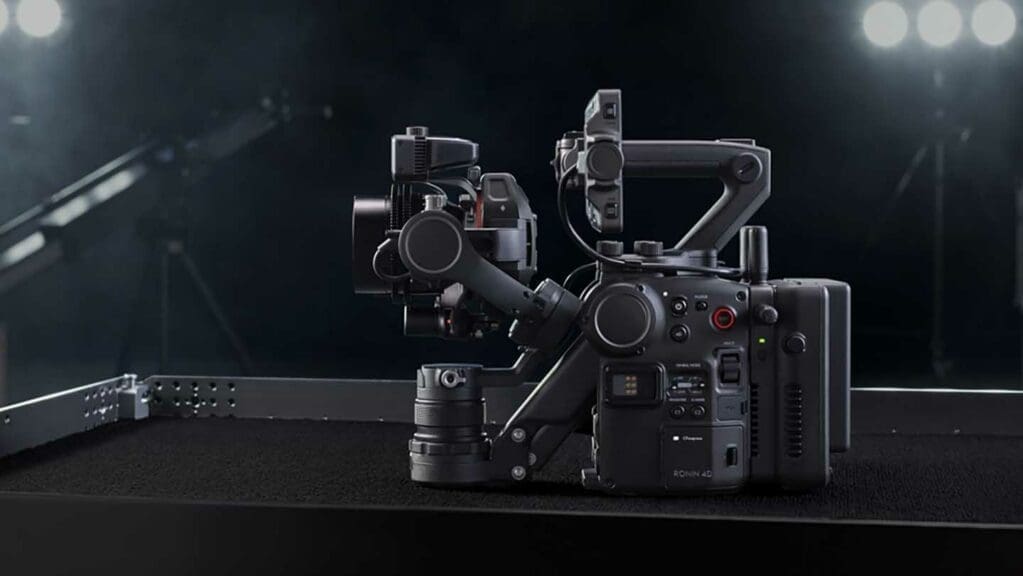
Both cameras will feature the ability to record in the standard H.264 codec, as well as being able to record Apple ProRes and ProRes RAW in-camera. These options will give editors far more scope when it comes to the grading process.
Zenmuse X9-6K will offer 6K at 60fps and 4K at 120fps, the X9-8K offers 8K at at collosal 75fps.
A dual native EI of 800/5,000 and over 14 stops of dynamic range will ensure that scenes are captured with rich colour grades regardless of the location.
In complex light situations, DJI has developed their Cinema Color System (DCCS) that will help to deliver natural skin tones and help capture tonal consistency through all camera angles.
A feature that all cinematographers will love is the built-in 9-stop ND filter. This is a physical filter rather than digital and offers plenty of scope for correcting the light in all bright conditions.
If you’re worried that the all in one design is going to limit lens choice, then you’ll be pleased to hear that DJI has included an interchangeable lens mount.
The DJI Ronin 4D lens mount connects to DJI’s DL mount, Leica M mount and Sony E-Mount and other manufacturers that utilise a short flange length.
This choice will enable you to customise the DJI Ronin 4D to your style and access the ultra-large aperture, anamorphic and vintage lens you want to use.
The Industry’s First Active-Vertical 4-Axis Stabilization System
The big news with the DJI Ronin 4D is the 4-axis Stabilisation System. While 4-Axis might not be new, it is a first to have it packed into a system like this.
4-axis gives you the usual tilt, roll and yaw correction and corrects the up, down motion or bobbing often created by walking or running.

For the first time, this new motion correction cuts out the need for complex and expensive dolly systems instead, enabling stair glides to be easily shot handheld by anyone.
DJI has worked hard on both the new mechanics, technology and software. A set of downward ToF sensors, forward and downward dual vision sensors, built-in IMU and barometer all feed data to a powerful algorithm to give the best handheld stabilisation yet.
DJI’s years of experience with drone, gimbal and camera technology come together to offer the complete package at a size and weight that is still smaller and lighter than most other professional camera set-ups.
Moreover, because the system is from DJI, it features many of the same advanced features that we’ve seen on their drones, such as ActiveTrack that will enable you to get complex tracking shots easily.
Based on the existing ActiveTrack system, the Pro version utilises the latest AI to track subjects from longer distances while maintaining composition.
LiDAR uses laser accuracy when focusing.
One of the issues of any gimbal system is the focus; if the lens is on the gimbal, then you can’t go adjusting the focus ring manually.
Of course, this has all been well planned and designed by DJI with the new LiDAR Range Finder. This precise laser measurement makes compatible AF lenses fast and accurate to focus.
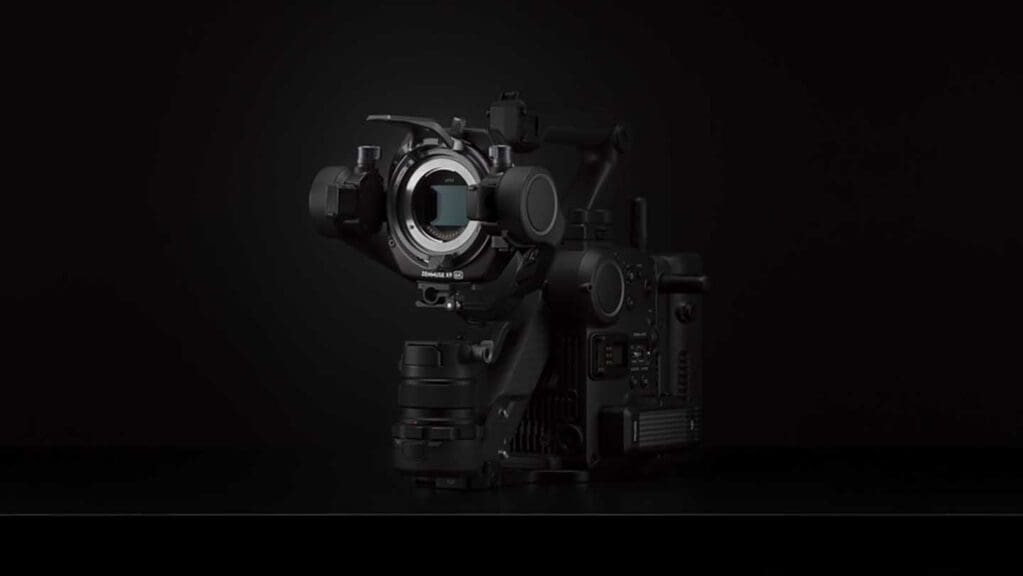
Casting over 43,200 range points up to a distance of 10 meters, the system can detect subjects quickly, even in low light conditions.
The DJI Ronin 4D will offer three focusing modes; Manual, Auto Focus and DJI’s unique Automated Manual Focus (AMF).
In manual focus, the system works with the mounted lens to provide a LiDAR Waveform; this assistive tool enables cinematographers to locate focus points and pull focus with precision.
A compatible AF lens will keep the focus on the system and will be ideal for documentary filmmaking. At present, it looks like. The AF will be available to DL and E-Mount lenses.
Automated Manual Focus combines manual and auto to rotate the focus wheel while following the focus point automatically.
Ultra-Low Latency, Long-Range, and Anti-Interference Transmission
Video transmission in cinematography has always been an important feature, especially as the size of the productions grow.
The issue has always been cost, and traditionally cables have been the easiest and cheapest solution.
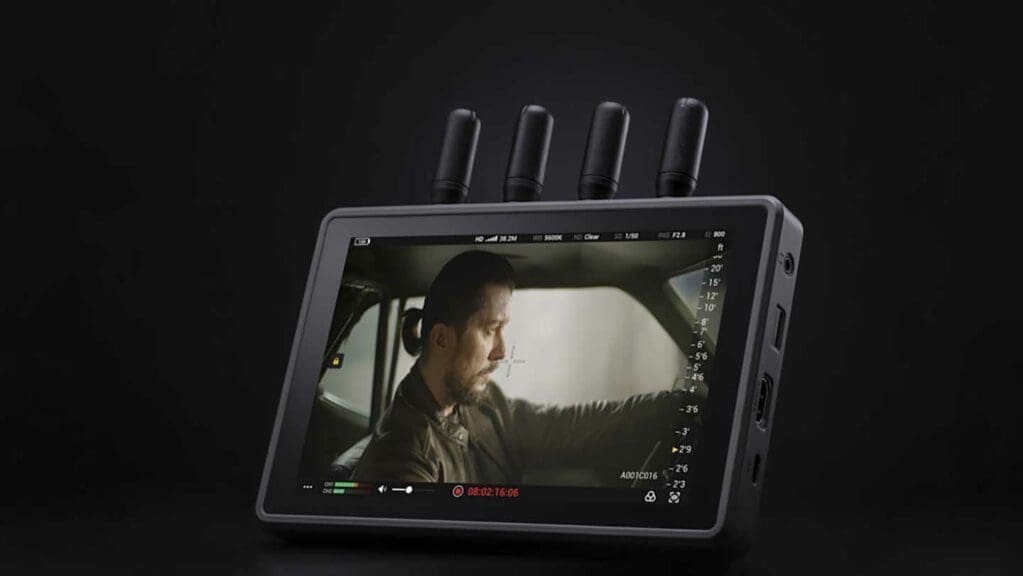
DJI’s all-new O3 Pro transmission technology offers a 1080p/60fps feed to remote monitors from up to 20,000 feet away. This feed also features 256-bit encryption to protect the feed.
Importantly the transmission is ultra-low latency, meaning the footage is viewed in near real-time.
O3 Pro uses 2.4GHz and 5.8GHz and supports the DFS frequency band to help improve signal stability and reliability. This frequency is also more robust to interference.
The system is compatible with multiple receivers and transmitters for large productions, enabling easy Multicam and on the fly editing and production.
In addition to the camera is the High-Bright Remote monitor that integrates the wireless video receiver into a 1,500-nit, 7-inch monitor.
This monitor features a gyro sensor to enable motion control over the camera unit enabling remote operation.
The monitor will also connect to the Ronin 4D Hand Grips, DJI Master Wheels, DJI Force Pro, or the new DJI Three-Channel Follow Focus to modernise coordinated shoots.
Several remote monitors can be used together, giving you the option to show clean feeds and those with LUTs applied.
Storage, Sound Recording, and Battery Life
Storage for the DJI Ronin 4D is supplied through three options, USB SSD, ideal for 4K Productions, CFExpress Type-B and DJI’s own PRO SSD 1TB for the highest performance.
Sound is catered for with a built-in mic, 2-channel 24-bit, two 3.5mm jacks and two XLE ports built into the expansion plate.
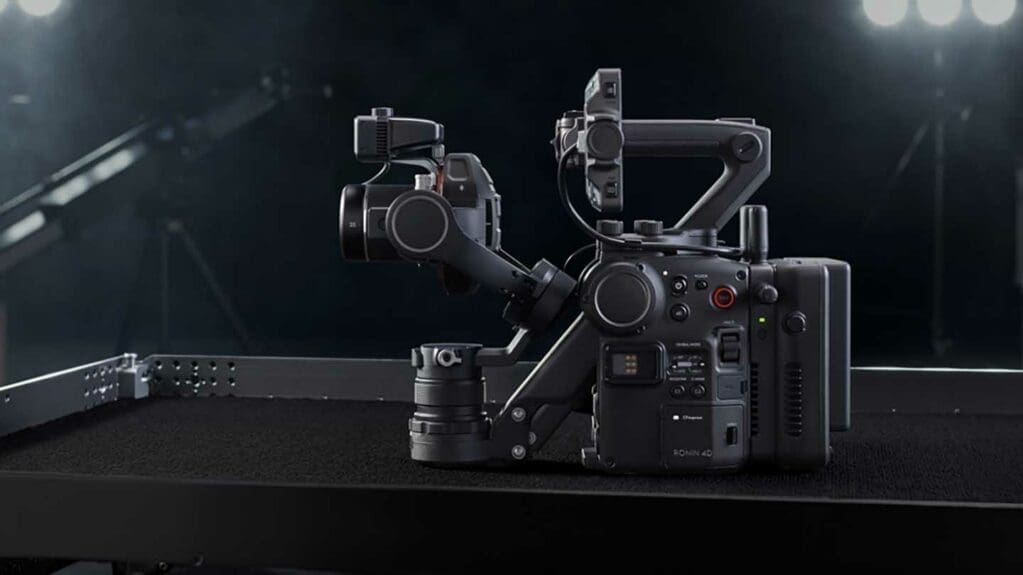
As with the Ronin 2 and Inspire 2, the DJI Ronin 4D uses the TB50 Intelligent battery, which offers 2.5 hours of shooting time.
DJI Ronin 4D Pricing and Availability
DJI Ronin 4D is available in 8K and 6K combos.
The 6K version features the Main Body, a Zenmuse X9-6K Gimbal Camera, LiDAR Range Finder, High-Bright Main Monitor, Hand Grips, Top Handle, TB50 Intelligent Battery, and Carrying Case; it is priced at 5,999 GBP/ from 6,999 EUR (subject to local taxes) and will be available from store.dji.com and in other channels starting in December.
The 8K version features a more powerful Zenmuse X9-8K Gimbal Camera and a PRO SSD 1TB; it is priced at 9,499 GBP/ from 10,999 EUR (subject to local taxes) will be available from store.dji.com and other channels at a later date.
To utilise Ronin 4D to its full potential, the 4D Video Transmitter, High-Bright Remote Monitor, and DJI PRO SSD 1TB are available separately. For more information, please visit www.dji.com/ronin-4d.
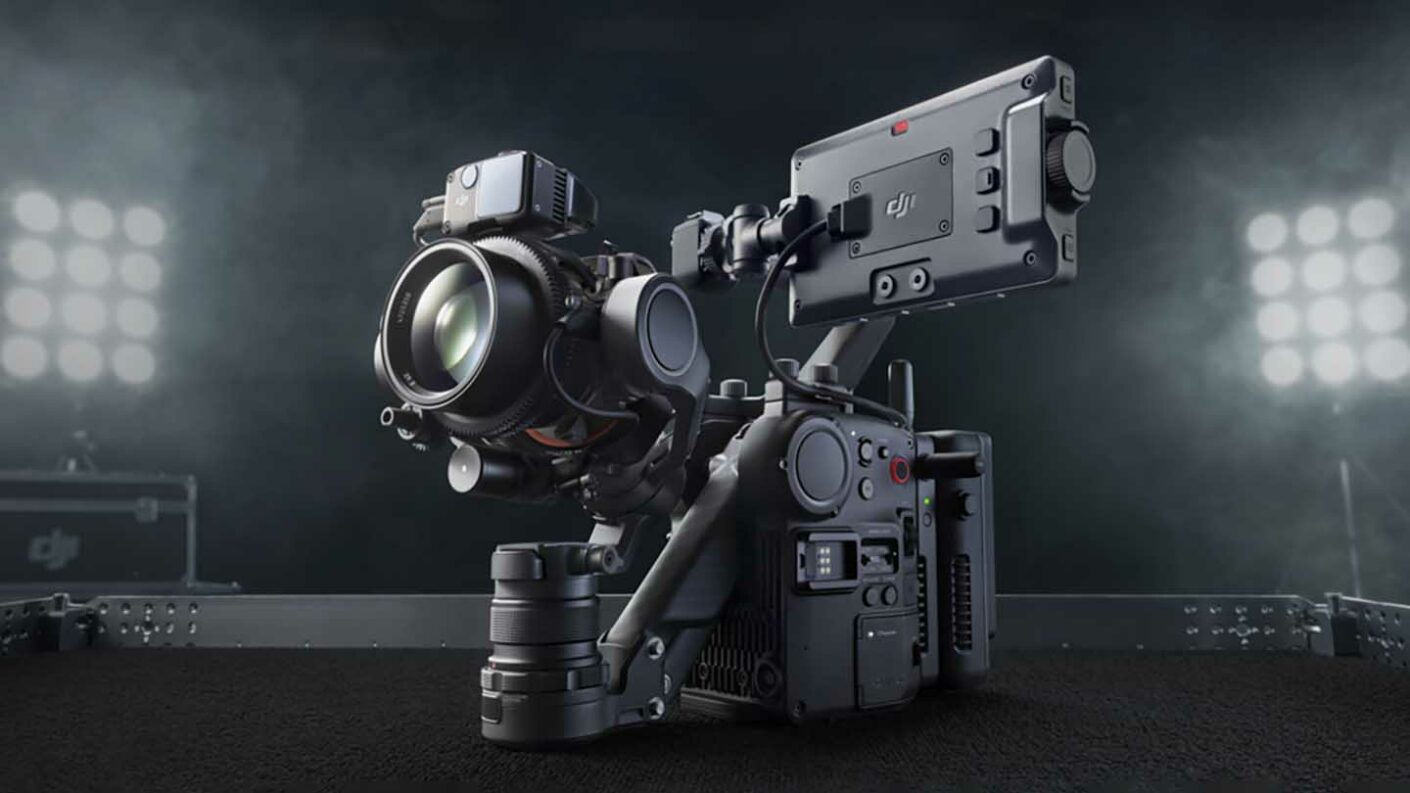



Awesome gear…